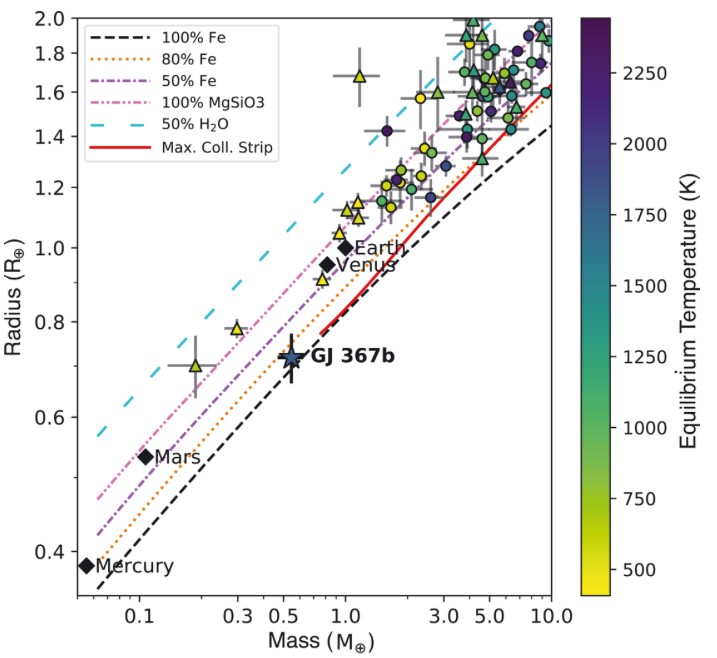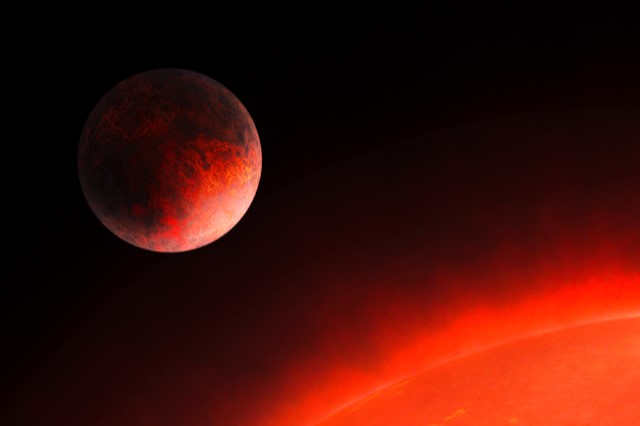In the world of extrasolar planets, "GJ 367 b" is a featherweight. With half the mass of Earth, the newly discovered planet is one of the lightest of the nearly 5,000 exoplanets known today. It takes about eight hours for the extrasolar planet to orbit its host star. With a diameter of just over 9,000 kilometers, GJ 367 b is slightly larger than Mars but smaller than Earth. This planetary system is located just under 31 light years from our planet and is therefore ideal for further studies of its properties. His discovery demonstrates that it is possible to accurately determine the characteristics of the smallest and lighter exoplanets. Such studies provide new clues to better understand how planets form and evolve.
An international group of 78 researchers from 49 institutions including the Department of Astrophysics (DAp) at CEA / Irfu published this study in the scientific journal Science based on initial observations from the NASA / MIT Transiting Exoplanet Survey Satellite (TESS).
"With an orbital period of only one third of a terrestrial day, the year on GJ 367 b is therefore much shorter than the day on Earth, while the star spins on itself in 48 days, which makes around 1.7 times slower than our Sun ”says Rafael A. García, CEA researcher who is part of the team.
The DAp focused its effort in the characterization of the host-star with TESS as well as using WASP data which allowed us to determine with high precision the rotation period of the star (48 days).
The origin of the small fast planets still unknown
GJ 367 b belongs to the group of "Ultra-Short-Period" (USP) exoplanets that orbit their star in less than 24 hours. Following the discovery of this planet using the TESS mission following the transit method (by measuring the decrease in the star's luminosity when the planet passes in front), the spectrum of the host star has then been studied from ground using the radial velocity method (the position of the star moves under the action of the gravitational attraction of the planet). The mass was determined using the HARPS instrument located on the 3.6 m telescope of the European Southern Observatory. Through this meticulous study and the combination of different evaluation methods, the radius and mass of the planet were determined with precision: its radius is 72% of the radius of the Earth, and its mass is 55% of the mass. of the earth.

Masses and radii of small planets (<2 R_Earth) both of which are measured with an accuracy of ~30%. Error bars indicate uncertainties at 1 sigma. The symbols of the exoplanets are color coded according to the daytime equilibrium temperatures (color bar). Theoretical mass-radius relationships for rocky two-layered planets are shown with lines corresponding to the different mass fractions of the core. These cores are made of pure iron, pure rock, or a two-layered core with a mixture of iron and rock, or rock and ice, as shown in the legend. GJ 367b is probably an iron dominated planet.
Highest precision for radius and mass
By determining its radius and mass with an accuracy of 7 and 14% respectively, the researchers were also able to draw conclusions about the internal structure of the exoplanet. It is a rocky planet of low mass, but one that has a higher density than Earth and probably with a disproportionate iron and nickel core that sets it apart from other terrestrial bodies in the solar system. However, the planet's proximity to its star means it is exposed to an extremely high level of radiation, more than 500 times stronger than what Earth is experiencing. The surface temperature could reach up to 1,500 degrees Celsius - a temperature at which all rocks and metals would be melted. GJ 367 b cannot therefore be considered as a “second Earth”.
The host star is a "red dwarf"
The host star of this newly discovered exoplanet, a red dwarf called GJ 367, is only about half the size of the Sun. This was beneficial for its discovery because the transit signal of the orbiting planet is particularly significant. Red dwarfs are smaller than the Sun, making their associated planets easier to find and characterize. They are among the most common stellar objects in our cosmic neighborhood and are therefore suitable targets for exoplanet research.
When we celebrate the 25th anniversary of the detection of the first exoplanet, a success which was recognized by the international community by the Nobel Prize, the attention is no longer so much on the detection of new exoplanets, but on the precise characterization of the systems as a whole, from the host star to all the planets orbiting around, including the characterization of their atmospheres, which is the subject of an exciting roadmap with the future space missions JWST (2021), PLATO (2026), and ARIEL (2028) where the departments of astrophysics, engineering, and instrumentation of Irfu are strongly involved.
Contact DAp:
Rafael A. Garcia , Stéphane Mathis, Antonio García Muñoz , Antoine Strugarek
• Structure and evolution of the Universe › Planets, star's formation and dynamics, interstellar medium





